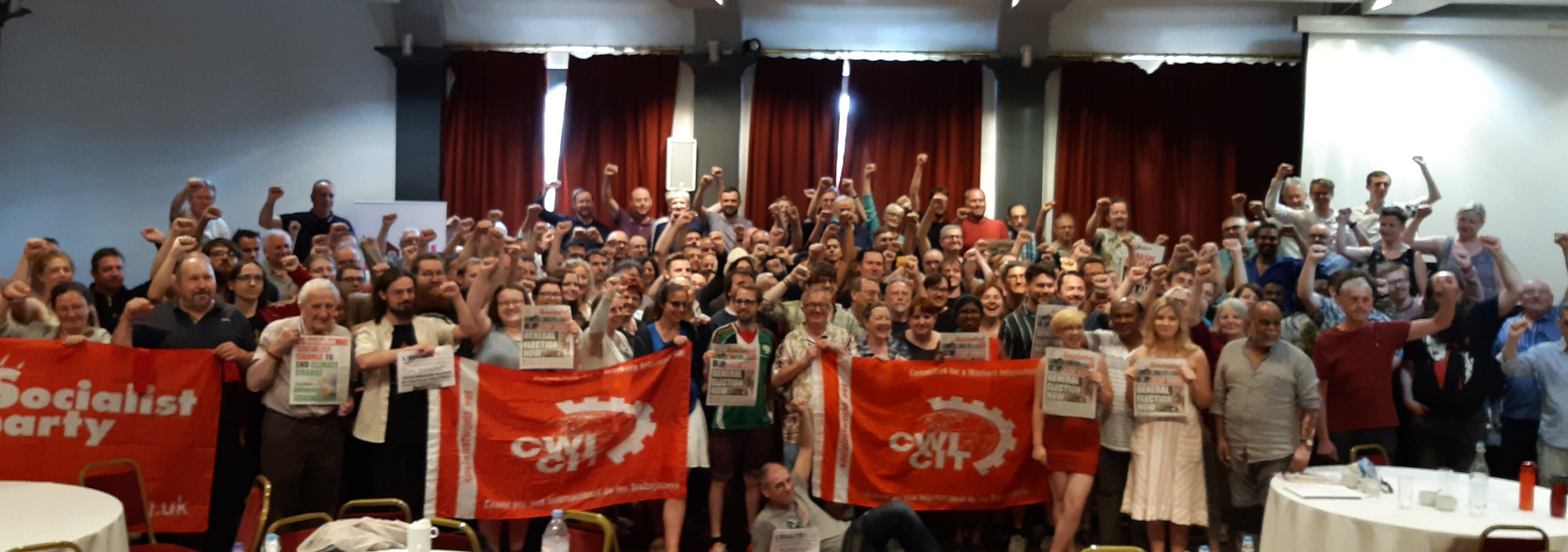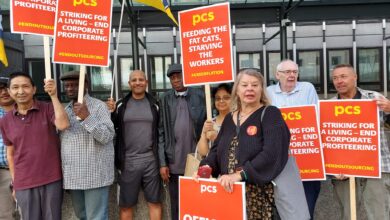Rival economic plans add up to more pain for the working class

Step up the socialist campaign for independence
The formal campaigning period for the independence referendum, which takes place on September 18, begins today. With sixteen weeks to go both the Scottish and UK governments have produced their supposedly decisive economic cases for independence and the union.
Danny Alexander, the chief butcher to the treasury, claimed by remaining part of the UK every person in Scotland would benefit through an annual “dividend” of £1,400 for the next 20 years.
In contrast, SNP leaders Alex Salmond and John Swinney pledged that under independence each family in Scotland would have an independence “bonus” of £2,000, although not until 2029-30.
The Con-Dem government’s case is a joke when you consider the billions that they have slashed from incomes and public services since they came to power in 2010. Even the so-called “recovery” that we hear so much about only exists for the rich elite. As the recent Sunday Times rich list exposed there has been a bonanza for the billionaires whose wealth has increased by 15% in the last year, while the incomes of ordinary workers continue to fall.
The Scottish Government’s own White Paper on independence highlighted that since the crisis in 2008 wages in Scotland have fallen in real terms by over 8% or £1,600 a year.
The recent Office of National Statistics report found that energy bills have rocketeed up by 57%, food prices by 40%, and petrol by 49% over the same period.
Over 100,000 workers in Scotland are on zero-hour contracts, living precarious, stressed-out lives. Hundreds of thousands more are under-employed or now self-employed. Nor is the huge rise in the self-employed based on entrepreneurial “whiz kids”. Tax expert Richard Taylor worked out that “the average, inflation adjusted, earnings of those who are self-employed in Britain fell from just under £15,000 a year at the turn of the century to £10,400 in 2011, a real decline of just over 31%.
The laughable claim of a “union dividend” flies in the face of the reality for millions in Scotland, and throughout the UK, of a continued slide deeper into poverty, low pay and insecurity.
SNP’s damp squib
But the SNP’s White Paper and now the “Outlook for Scotland’s Public Finances” under independence will not inspire those already committed to supporting Yes in September. Nor will it answer the doubts or hesitations of those who could be won to a Yes position.
The SNP’s independence “bonus” of £1,000 per person will not be delivered until 2029. This wouldn’t even come close to making up for the £1,600 that the average worker has lost in the falling value of their wages since the crisis began in 2008. Nor does it take into account the continued deluge of cuts planned until 2017, whichever government wins the UK general election next year.
The Scottish Government’s paper even raises the possibility that it would continue with Tory spending plans in the first two years after independence, although it prefers a slight increase in public spending, ”if possible.” But even their best case 3% “nominal growth” in public spending does not take into account the impact of inflation. Meaning in practice that there would be minimal improvements, at best, in public spending post independence. A reversal of the cuts is ruled out under the SNP.
The determination of the SNP leadership to keep a tight rein on public spending post-independence is underlined by their comments that “fiscal discpline” and “sustainable public finances” will be required. This is very much a signal to the Bank of England – with whom the SNP leadership hope to form a currency union – and international investors, that in an independent Scotland the rules of capitalism will be closely followed by the SNP.
Moreover, even the “£1,000 independence bonus” is predicated on a combination of an increase in “labour productivity”, a rise in the employment rate in Scotland and a continued reliance on workers coming to Scotland for employment. All of this supposes an organic growth in the capitalist economy leading to a higher tax take by the government and, at some point, improved public spending.
As the Socialist Party has explained many times, capitalism is in a blind alley, unable to further develop the productive forces (factories, offices, science and technique), or to use the surplus created by workers to invest in much needed industrial development.
Increases in “labour productivity” are no longer primarily based on investment into the productive forces, but instead mainly on the super-exploitation of the working class. Meaning workers having to work longer hours for lower pay, suffer casualisation of work and the increased use of zero-hour contracts.
It’s also clear from the SNP’s paper that the use of migrant workers forms an important part of their economic strategy. This will no doubt be used by right wing and reactionary forces including the Tories, Ukip and others to attack the idea of independence.
But it will also raise doubts in the minds of some working class people in Scotland as well. The super-exploitation of migrant workers has been used by the capitalists, successfully in some sectors, to drive down wages and boost profits. There is little sign that this type of exploitation would end under the SNP’s plans.
Rather than oppose the right of migrant workers to travel to find work the Socialist Party fights for a living wage for all workers, the rate for the job and trade union rights to stop the race to the bottom.
The experience of the majority of migrant workers in Scotland has been that they have been pushed into the poorest paid sectors of the economy, including agriculture, hotels and hospitality. Unless a united campaign of trade unionisation and joint campaigning by migrant and indigenous workers is built there is a danger that divisions can open up, leading to a deepening of racism and division.
Socialist policies needed
It’s also vital that the case for public ownership of the major sectors of the economy, including oil and gas, finance, services and transport etc, is put centre stage.
The ownership and control of the major sectors of the Scottish economy are already held by UK and international big business. Only through a widespread programme of public ownership would it be possible to ensure the wealth created in Scotland by the working class is not exported into the pockets of the multinationals.
By publicly owning the economy under democratic working class control it would be possible to create full employment and end the race to the bottom, ensuring a living wage for all workers, regardless of background or nationality. This needs to be linked to the building of democratic socialist confederation of states including England, Wales, Ireland and internationally that an independent socialist Scotland could build a socialist planned economy with.
However, there is no possibility of a return to the exceptional, from a capitalist point of view, period of the boom from 1950-1973. Today, capitalism is engaged in an unrelenting campaign to attack the gains made by the working and middle class in the upswing. This includes in the Nordic countries, often held up as a model by the official Yes campaign and some on the left.
The SNP’s prognosis for independence, as outlined in this latest document, will not inspire support for a Yes majority in September. It’s represents a template for a continuation of austerity and capitalist exploitation and will fail to answer the questions that many working class people have.
The referendum campaign has, to an extent, given a voice to the anger of many who are attracted to the idea of voting Yes to break away from unending cuts and falling living standards. Thousands have been attending public meetings over the last few weeks to hear Tommy Sheridan and others, including Socialist Party Scotland members, make the case for an independent Scotland that puts an end to cuts, for public ownership, and the idea of a new mass workers party to provide a political alternative for the working class majority .
This socialist campaign for independence can play a key role in the next three months in putting an alternative case for a Yes vote. A case based on using the powers of independence to reverse the cuts, for a massive programme of job creation, a living wage and an end to brutal benefit attacks. It’s clear that the SNP leadership will not deliver that. It’s time to step-up the campaign for a fighting socialist and working class alternative.



